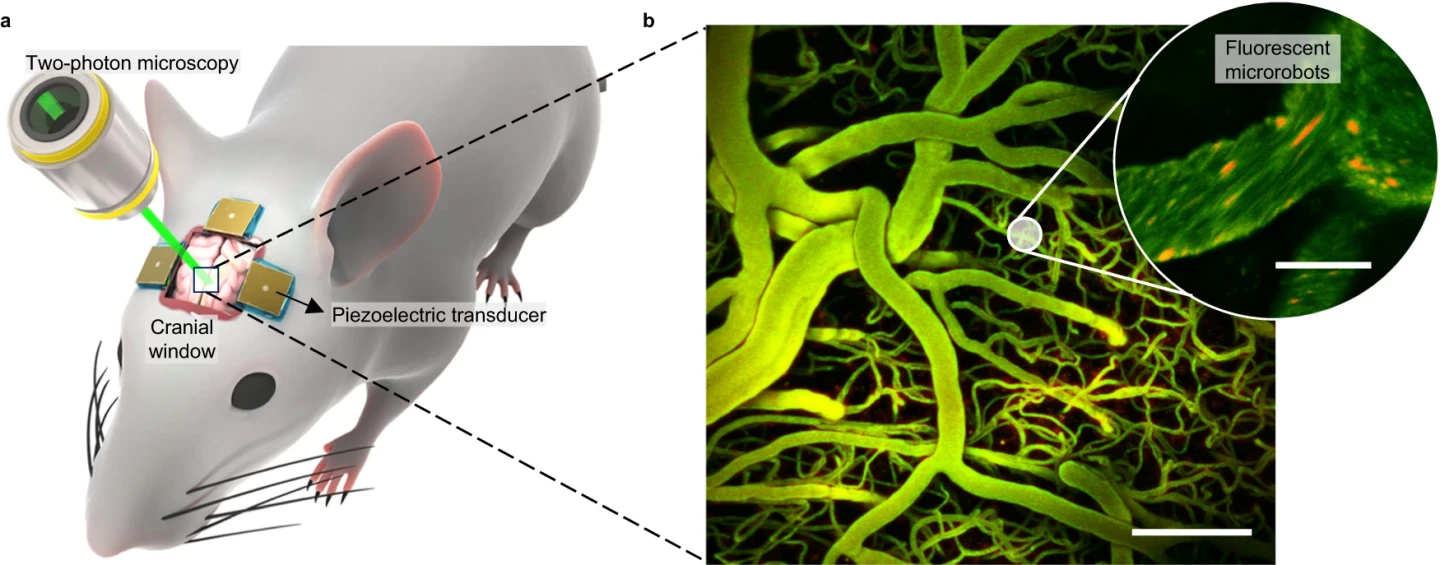Researchers have developed a bubble microrobot capable of being guided around the tiny complex blood vessels of the brain using ultrasound. Successfully tested in mice, the ‘microvehicle’ holds potential as a means of precisely delivering drugs to treat diseases like brain cancer and stroke.
Our brains contain over 404 miles (650 km) of blood vessels. Improvements in nanotechnology have allowed for the development of microbots that can navigate these miniscule complex routes to access previously inaccessible regions, provide precise drug delivery, and perform minimally invasive surgery.
Given the intricacy of the blood vessel network and the force of blood flow encountered, a means of guiding the microbots is needed. Using magnetic fields to navigate microbots through the brain's vasculature offers precise manipulation but limits the bots’ biodegradability because they have to be magnetic.
Now, researchers at ETH Zurich, the University of Zurich and University Hospital Zurich have collaborated to develop microvehicles – gas-filled microbubbles coated in lipids – that can navigate the narrow and complex blood vessels of a mouse brain using ultrasound.
“In addition to being widely used in the medical field, ultrasound is safe and penetrates deep into the body,” said Daniel Ahmed, one of the study’s corresponding authors.
The small, smooth, gas-filled microbubbles, which have a diameter of between 1.1 and 1.4 µm, were made of a fluorescent contrast agent currently used in ultrasound imaging. They dissolve in the body over time and the lipid shell is made from the same substance that biological cell membranes are made of.

The researchers injected the microbubbles into mice and allowed them to circulate in the animal’s bloodstream. Microscopy allowed real-time imaging of the bot. Using up to four ultrasound-generating transducers attached to the outside of the mouse’s head, the researchers found that the microbots responded to the acoustic waves by self-assembling into swarms and navigating along the brain vasculature.
The bots were guided by adjusting the output of each transducer, achieving velocities up to 1.5 µm/s and successfully moving against blood flows of up to 10 mm/s. The findings demonstrated that the acoustic microswarms worked under in vivo physiological conditions. Analyzing the brain tissue after ultrasound actuation, the researchers found that the microbots neither disrupted the lining of the blood vessels nor caused neuronal cell death.
Creating their microbubbles out of a substance already in use has advantages.
“Since these bubbles, or vesicles, are already approved for use in humans, it’s likely that our technology will be approved and used in treatments for humans more quickly than other types of microvehicles currently in development,” said Ahmed.
Now they’ve shown that their microbots can navigate the blood vessels of a mouse brain, the next step for the researchers is to attach drug molecules to the outside of the microbubble casing. If successful, the ultrasound-activated microvehicles can potentially be used to treat cancer, stroke, and psychological conditions.
The study was published in the journal Nature Communications.
Source: ETH Zurich






